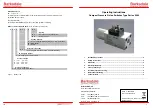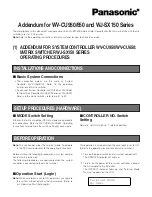
Introduction to ARP
573
ARP Implementation
The ARP table of a host is empty when the host just starts up. When a dynamic
ARP entry has not been used for a specific time period, it is removed from the ARP
table. The purpose of this is to save memory space and update the entries in the
ARP table. The following describes the implementation procedure of ARP.
■
Suppose Host A and Host B are on the same network segment. The IP address
of Host A is IP_A and that of Host B is IP_B. To send a packet to Host B, Host A
first looks up its own ARP table for an ARP entry that contains IP_B. If such an
entry is found, Host A encapsulates the IP packet into a frame by using the
MAC address in the entry as the destination MAC address and then sends the
frame to Host B.
■
If no such an entry is found in the ARP table, Host A puts the packet into the
transmission queue, generates an ARP request packet with the IP addresses of
Host B and Host A and the MAC address of Host A (IP_B, IP_A and MAC_A),
and broadcasts the request on the Ethernet. Since the ARP request is
broadcasted, all hosts on the network segment receive it. However, only the
host with IP address IP_B (Host B) will process the request further.
■
Host B adds the sender IP address and MAC address carried in the request (IP_A
and MAC_A of Host A) in an entry to its ARP table and then returns an ARP
reply packet to the sender (Host A), with its MAC address carried in the packet.
Note that the ARP reply is a unicast packet instead of a broadcasted packet.
■
Upon receiving the ARP reply, Host A extracts the IP address and MAC address
of Host B from the packet, adds them in an entry to its ARP table, and then
sends out all the packets destined for Host B in the transmission queue.
Generally, a host will automatically trigger ARP procedure during IP addressing.
Introduction to
Gratuitous ARP
Gratuitous ARP packets have the following characteristics:
■
Both source and destination IP addresses of a gratuitous ARP packet are the
local addresses; the source MAC address of it is the local MAC address.
■
If a device finds that the IP address in an incoming gratuitous packet conflicts
with its own IP address, it returns an ARP replay to the sending device to notify
the sender of the IP address conflict.
By sending gratuitous ARP packets, a network device can:
■
Determine whether or not IP address conflict exists between it and other
network devices.
■
Trigger other network devices to update its hardware address stored in their
caches.
Type
Entry type, which can be:
■
1: Not any of the following
■
2: Invalid entry
■
3: Dynamic entry
■
4: Static entry
Table 446
Field descriptions of an ARP table
Field Description
Summary of Contents for Switch 7757
Page 32: ...32 CHAPTER 1 CLI OVERVIEW...
Page 70: ...70 CHAPTER 5 LOGGING IN USING MODEM...
Page 76: ...76 CHAPTER 7 LOGGING IN THROUGH NMS...
Page 86: ...86 CHAPTER 9 CONFIGURATION FILE MANAGEMENT...
Page 120: ...120 CHAPTER 13 ISOLATE USER VLAN CONFIGURATION...
Page 126: ...126 CHAPTER 14 SUPER VLAN...
Page 136: ...136 CHAPTER 16 IP PERFORMANCE CONFIGURATION...
Page 152: ...152 CHAPTER 17 IPX CONFIGURATION...
Page 164: ...164 CHAPTER 19 QINQ CONFIGURATION...
Page 172: ...172 CHAPTER 21 SHARED VLAN CONFIGURATION...
Page 182: ...182 CHAPTER 22 PORT BASIC CONFIGURATION...
Page 198: ...198 CHAPTER 24 PORT ISOLATION CONFIGURATION...
Page 208: ...208 CHAPTER 25 PORT SECURITY CONFIGURATION...
Page 224: ...224 CHAPTER 27 DLDP CONFIGURATION...
Page 232: ...232 CHAPTER 28 MAC ADDRESS TABLE MANAGEMENT...
Page 240: ...240 CHAPTER 29 CENTRALIZED MAC ADDRESS AUTHENTICATION CONFIGURATION...
Page 280: ...280 CHAPTER 30 MSTP CONFIGURATION...
Page 348: ...348 CHAPTER 35 IS IS CONFIGURATION...
Page 408: ...408 CHAPTER 39 802 1X CONFIGURATION...
Page 412: ...412 CHAPTER 40 HABP CONFIGURATION...
Page 422: ...422 CHAPTER 41 MULTICAST OVERVIEW...
Page 426: ...426 CHAPTER 42 GMRP CONFIGURATION...
Page 480: ...480 CHAPTER 47 PIM CONFIGURATION...
Page 506: ...506 CHAPTER 48 MSDP CONFIGURATION...
Page 552: ...552 CHAPTER 51 TRAFFIC ACCOUNTING CONFIGURATION...
Page 570: ...570 CHAPTER 53 HA CONFIGURATION...
Page 582: ...582 CHAPTER 54 ARP CONFIGURATION SwitchA arp protective down recover interval 200...
Page 622: ...622 CHAPTER 58 DHCP RELAY AGENT CONFIGURATION...
Page 684: ...684 CHAPTER 61 QOS CONFIGURATION...
Page 718: ...718 CHAPTER 63 CLUSTER...
Page 738: ...738 CHAPTER 67 UDP HELPER CONFIGURATION...
Page 752: ...752 CHAPTER 69 RMON CONFIGURATION...
Page 772: ...772 CHAPTER 70 NTP CONFIGURATION...
Page 796: ...796 CHAPTER 72 FILE SYSTEM MANAGEMENT...
Page 802: ...802 CHAPTER 73 BIMS CONFIGURATION...
Page 814: ...814 CHAPTER 74 FTP AND TFTP CONFIGURATION...
Page 830: ...830 CHAPTER 75 INFORMATION CENTER...
Page 836: ...836 CHAPTER 76 DNS CONFIGURATION...
Page 852: ...852 CHAPTER 77 BOOTROM AND HOST SOFTWARE LOADING...
Page 858: ...858 CHAPTER 78 BASIC SYSTEM CONFIGURATION DEBUGGING...
















































